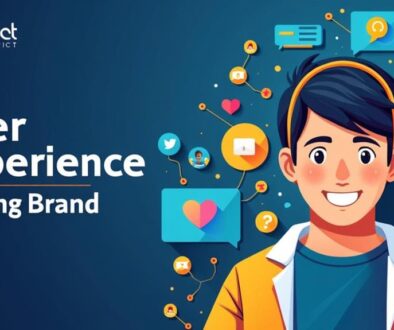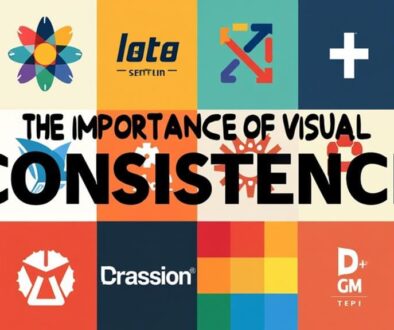How to Build Brand Loyalty Through Consistent Customer Experiences
Building brand loyalty requires a strategic approach focused on delivering consistent customer experiences. Start by mapping the customer journey to identify key touchpoints. Establish clear brand guidelines to guarantee unity in messaging and visuals across all channels. Empower employees through rigorous training to foster exceptional service, equipping them with conflict resolution skills. Leverage technology for personalized engagement and gather feedback regularly to refine your strategy. Additionally, implement structured loyalty programs to strengthen emotional connections. This multifaceted strategy not only enhances customer satisfaction but also fortifies loyalty. Exploring these tactics reveals even more effective ways to build lasting relationships.
Key Takeaways
- Ensure a unified experience across all customer touchpoints to reinforce brand identity and trust.
- Maintain consistency in messaging to align with brand values and enhance customer recognition.
- Implement thorough training programs for employees to empower them in delivering exceptional customer interactions.
- Utilize customer feedback loops to adapt strategies and continuously improve customer experience.
- Develop effective loyalty programs with personalized rewards to foster long-term relationships and engagement.
Understand Your Customer Journey

To effectively build brand loyalty, businesses must first gain a thorough understanding of the customer journey—a roadmap that outlines the various stages customers traverse from awareness to post-purchase evaluation. This involves journey mapping, which identifies critical customer touchpoints and highlights the emotional connections forged at each stage.
By understanding user personas, organizations can tailor experiences that resonate with specific demographics, guaranteeing that they address unique pain points while maximizing satisfaction.
To foster loyalty, it is essential to analyze decision moments—those pivotal instances where customers weigh options and form judgments. This analysis, supplemented by behavioral insights, allows businesses to anticipate needs and manage expectations effectively.
Consistency across all experiences reinforces trust, while inconsistent messaging can lead to disillusionment and disengagement.
Integrating feedback loops into the customer journey facilitates ongoing dialogue, enabling companies to capture insights and adapt strategies in real-time. This iterative process guarantees that customer experiences evolve, aligning with changing preferences and behaviors.
By actively listening and responding to feedback, brands can strengthen emotional connections and mitigate potential pain points.
Ultimately, understanding the customer journey is not just about mapping touchpoints; it is about creating seamless, personalized experiences that nurture loyalty.
Brands that adeptly navigate this complex landscape will not only enhance customer satisfaction but also cultivate a devoted customer base, poised to advocate for the brand in an increasingly competitive marketplace.
Establish Brand Guidelines
Establishing brand guidelines is essential for guaranteeing that every customer interaction reflects a cohesive identity, as consistency reinforces brand recognition and trust.
Clear guidelines serve as a strategic framework that aligns your visual identity and messaging consistency across all platforms, creating a unified experience that resonates with your audience.
To effectively establish brand guidelines, consider the following key elements:
1. Visual Identity: Clearly define your brand's logo, color palette, typography, and imagery style.
These elements should not only be visually appealing but also evoke the desired emotional response from your audience. A well-defined visual identity guarantees that your brand remains recognizable, regardless of the medium.
2. Messaging Consistency: Develop a tone of voice and messaging framework that encapsulates your brand's personality.
This includes key phrases, values, and storytelling techniques that should be consistently employed across all communications. Effective messaging consistency strengthens your brand's narrative and fosters a deeper connection with your customers.
3. Application Guidelines: Detail how the visual and messaging elements should be applied in various contexts, such as social media, advertising, and customer service.
Clear application guidelines help to eliminate ambiguity and guarantee that every touchpoint reinforces the brand's identity.
Train Your Employees

A well-trained workforce can greatly enhance customer experiences and foster brand loyalty. To achieve service excellence, organizations must invest in thorough training programs that empower employees with the skills necessary for exceptional customer interactions. This begins with a robust onboarding experience that instills the company's values and service ethos from day one.
Employee empowerment is pivotal; when employees feel confident in their abilities, they naturally exhibit greater customer empathy. Training should include modules on conflict resolution and effective communication, enabling staff to navigate challenging situations adeptly. Such competencies not only enhance the customer experience but also reduce escalations, fostering a culture of trust and reliability.
Moreover, ongoing training initiatives should emphasize team collaboration and knowledge sharing. By encouraging employees to learn from one another, organizations can cultivate a dynamic environment focused on continuous improvement. Performance metrics can be utilized to track progress, ensuring that employees remain aligned with the company's strategic goals and customer expectations.
Incorporating regular feedback mechanisms into training programs will further refine the learning process. This allows organizations to adjust their training frameworks to meet evolving customer needs and market conditions effectively.
The strategic alignment of employee training with brand objectives not only enhances individual performance but also solidifies a cohesive brand identity that resonates with customers. Ultimately, investing in employee development is an investment in brand loyalty, as satisfied employees are the key to delivering exceptional customer experiences.
Leverage Technology
In today's digital landscape, leveraging technology is essential for cultivating brand loyalty through enhanced customer experiences.
By implementing personalized engagement strategies, organizations can create meaningful connections that resonate with consumers, while streamlined communication channels guarantee timely and efficient interactions.
Furthermore, data-driven decision-making empowers businesses to refine their offerings and anticipate customer needs, ultimately fostering a loyal customer base.
Personalized Engagement Strategies
Harnessing the power of technology to create personalized engagement strategies can greatly enhance customer experiences and foster brand loyalty. By leveraging data-driven insights, brands can connect with customers on an emotional level and deliver tailored content that resonates with individual preferences.
To implement effective personalized engagement strategies, consider the following approaches:
- Interactive Experiences: Utilize gamification and interactive content to engage customers, encouraging them to share their experiences and preferences.
- Targeted Messaging: Employ behavioral insights to craft messaging that aligns with customer interests and needs, ensuring your communications are relevant and impactful.
- User-Generated Content: Encourage customers to contribute content that showcases their experiences with your brand, reinforcing community and authenticity.
These strategies not only enhance engagement metrics but also create value propositions that resonate with your audience.
By identifying loyalty triggers through customer feedback and behaviors, brands can nurture lasting relationships. During a time when consumers seek tailored experiences, embracing personalized engagement strategies will position your brand as a leader in customer loyalty and satisfaction.
Embrace technology to transform customer interactions into meaningful connections that drive long-term brand allegiance.
Streamlined Communication Channels
Effective communication is paramount for cultivating brand loyalty, and leveraging technology to create streamlined communication channels can greatly enhance customer interactions.
An omnichannel approach guarantees that customers experience seamless changes across various customer touchpoints, reinforcing brand consistency. By integrating advanced communication tools, businesses can facilitate proactive communication, allowing for instant feedback and timely responses that meet diverse communication preferences.
User-friendly interfaces are essential in this digital landscape; they empower customers to engage effortlessly with your brand. By aligning messages across all channels, organizations can guarantee that every interaction reflects the brand's core values and mission, thereby enhancing message alignment. This consistency nurtures trust and encourages customer retention.
Moreover, prioritizing accessibility options guarantees that all customers, regardless of their capabilities, can engage effectively. Swift response times are critical, as they signal to customers that their needs are valued and addressed promptly.
By focusing on these elements, companies can not only enhance customer satisfaction but also foster a deep-rooted loyalty that transcends mere transactions, creating advocates who will champion the brand in their networks.
Data-Driven Decision Making
Data-driven decision making is essential for businesses seeking to optimize customer experiences and build brand loyalty. By harnessing the power of data analytics, organizations can make informed choices that resonate with their customers, ultimately fostering stronger connections.
Here are three critical aspects to take into account:
- Customer Segmentation: Utilizing data analytics allows businesses to categorize their audience based on behaviors, preferences, and demographics. This targeted approach enables personalized marketing strategies that enhance customer satisfaction.
- Performance Metrics: Tracking key performance indicators (KPIs) through data analytics provides insight into customer interactions. Understanding these metrics helps in identifying areas for improvement, ensuring that customer experiences remain consistent and positive.
- Predictive Analytics: Leveraging historical data to forecast future trends empowers organizations to proactively address customer needs. This anticipatory approach not only enhances the customer experience but also reinforces brand loyalty.
Incorporating data-driven decision making into your strategic framework is not merely a tactical advantage; it is a necessity for mastering customer engagement.
Gather and Analyze Feedback

Collecting and analyzing customer feedback is critical for understanding the nuances of client interactions and preferences. This process not only gauges customer satisfaction but also serves as a foundation for establishing effective feedback loops that can enhance the overall customer experience. By systematically gathering insights from various touchpoints—be it surveys, reviews, or direct communications—brands can identify patterns and areas for improvement.
Implementing robust feedback mechanisms allows organizations to capture real-time sentiments, thereby enabling them to respond proactively. When customers feel heard, their loyalty is strengthened, creating a virtuous cycle where positive interactions reinforce brand allegiance. This strategic approach to feedback guarantees that customer voices are not only acknowledged but actively shape future offerings.
Analyzing feedback quantitatively and qualitatively provides an all-encompassing understanding of customer needs and expectations. Employing advanced analytics tools can uncover deeper insights, helping brands detect trends that might otherwise go unnoticed. This data-driven approach fosters a culture of continuous improvement, where brands evolve in alignment with customer desires.
Moreover, integrating feedback into the decision-making process not only enhances product development but also tailors marketing strategies that resonate with target audiences. By closing the feedback loop, brands demonstrate their commitment to customer satisfaction, which is pivotal in today's competitive landscape.
Ultimately, an organization that prioritizes customer feedback is not merely responding to the market; it is actively shaping a loyal customer base poised for long-term engagement.
Create Loyalty Programs
Creating effective loyalty programs is crucial for fostering long-term customer relationships and enhancing brand engagement.
Implementing reward structures that engage customers, along with tiered benefits that recognize loyalty, can greatly elevate the customer experience.
In addition, integrating personalized elements into these programs guarantees that customers feel valued and understood, driving repeat business and advocacy.
Reward Structures That Engage
Engagement is a cornerstone of effective loyalty programs, which not only incentivize repeat purchases but also foster deeper connections between brands and customers.
In order to create reward structures that truly engage, brands must thoughtfully evaluate various reward types and how they align with customer preferences.
Here are three essential components to weigh when designing an engaging loyalty program:
- Personalized Rewards: Tailoring rewards to individual customer preferences enhances emotional connection and satisfaction. Use engagement metrics to identify the most valued rewards.
- Experiential Benefits: Offering unique experiences, such as exclusive access to events or behind-the-scenes tours, can create memorable interactions and strengthen brand loyalty.
- Tiered Incentives: Implementing multi-level rewards encourages customers to aspire for higher tiers, consequently motivating increased spending and engagement over time.
Tiered Loyalty Benefits
Implementing tiered loyalty benefits is a strategic approach that can greatly enhance customer retention and brand allegiance. By establishing clearly defined reward tiers, businesses can create compelling loyalty levels that resonate with customers' aspirations. These tiers incentivize customers to engage more deeply with the brand, leading to increased purchasing frequency and overall spend.
Tiered loyalty programs offer exclusive perks at each level, enhancing member experiences and motivating customers to ascend through the hierarchy. For instance, a well-structured point system can amplify the perceived value of participation, as customers earn bonus rewards that are tied to their loyalty status. This not only fosters a sense of accomplishment but also encourages ongoing engagement.
Moreover, tiered access to special promotions and events can serve as powerful engagement incentives, creating a community around the brand. As customers progress through loyalty levels, they develop an emotional connection, reinforcing their commitment to the brand.
Ultimately, a well-crafted tiered loyalty program transforms casual shoppers into brand advocates, ensuring longevity in both customer relationships and business success. By prioritizing tiered loyalty benefits, brands can strategically position themselves for sustained growth in a competitive marketplace.
Personalized Experience Elements
A personalized experience is a crucial element in designing effective loyalty programs that resonate with customers on an individual level. By leveraging customer preferences and behavior analysis, brands can create programs that foster emotional connections and individual recognition.
The following strategies can enhance loyalty through tailored messaging and adaptive strategies:
- Targeted Promotions: Utilize behavior analysis to identify customer interests and deliver promotions that align with those interests. This guarantees contextual relevance and increases the likelihood of engagement.
- Unique Touchpoints: Develop multiple touchpoints that cater to diverse customer segments. These could include personalized emails, exclusive events, or tailored recommendations that make customers feel valued.
- User Generated Content: Encourage customers to share their experiences through user generated content. This not only strengthens community bonds but also provides authentic testimonials that can be used in future promotional efforts.
Frequently Asked Questions
What Are the Long-Term Benefits of Brand Loyalty for Businesses?
Brand loyalty yields significant long-term benefits for businesses, primarily through enhanced customer retention and reduced acquisition costs.
Loyal customers are more likely to engage in repeat purchases and advocate for the brand, fostering organic growth.
Additionally, effective loyalty programs can deepen customer relationships, incentivizing continued patronage and increasing lifetime value.
This strategic focus on loyalty not only stabilizes revenue streams but also cultivates a competitive advantage in increasingly crowded markets.
How Can I Measure Brand Loyalty Effectively?
Measuring brand loyalty effectively requires a multifaceted approach. Implementing customer surveys can provide valuable insights into consumer perceptions and satisfaction levels, allowing for the identification of loyalty drivers.
Additionally, analyzing data from loyalty programs helps track repeat purchases and engagement, revealing patterns in customer behavior.
Combining these methodologies enables businesses to create a thorough understanding of brand loyalty, facilitating targeted strategies to enhance customer retention and ultimately drive long-term growth.
What Role Does Social Media Play in Brand Loyalty?
In the digital age, social media serves as a double-edged sword for brands, shaping brand perception and fostering social engagement.
Effective use of social platforms allows companies to connect authentically with customers, creating an emotional resonance that cements loyalty. By engaging in meaningful interactions and addressing concerns promptly, brands can turn fleeting encounters into lasting relationships.
Ultimately, a strategic social media presence is pivotal in cultivating a loyal customer base that advocates for the brand.
How Often Should I Update My Brand Guidelines?
Determining the appropriate brand guideline frequency is essential for maintaining brand integrity and relevance.
Generally, organizations should consider updating their guidelines every 1-2 years, or more frequently if significant market changes or shifts in strategic direction occur.
Implementing updating strategies such as stakeholder feedback and competitive analysis can enhance the effectiveness of these revisions.
Regular updates guarantee that the brand remains aligned with evolving consumer expectations, fostering stronger connections and enhancing overall brand equity.
Can Brand Loyalty Impact Customer Acquisition Rates?
In the world of business, a bird in the hand is worth two in the bush, particularly when considering the interplay between brand loyalty and customer acquisition rates.
Strong brand loyalty fosters customer retention and leads to brand advocacy, where satisfied customers become enthusiastic promoters.
This organic growth can greatly enhance customer acquisition, as loyal customers often attract new clients through positive word-of-mouth, ultimately driving sustainable business success and market expansion.
Conclusion
To sum up, cultivating brand loyalty hinges upon the seamless integration of consistent customer experiences across all touchpoints. By meticulously understanding the customer journey, establishing clear brand guidelines, and empowering employees through targeted training, brands can create an enduring connection with their audience. Moreover, leveraging technology to gather and analyze feedback, alongside the implementation of effective loyalty programs, transforms transient interactions into lasting relationships. Ultimately, a strategic commitment to these principles will foster unwavering customer allegiance and elevate brand standing in a competitive marketplace.




